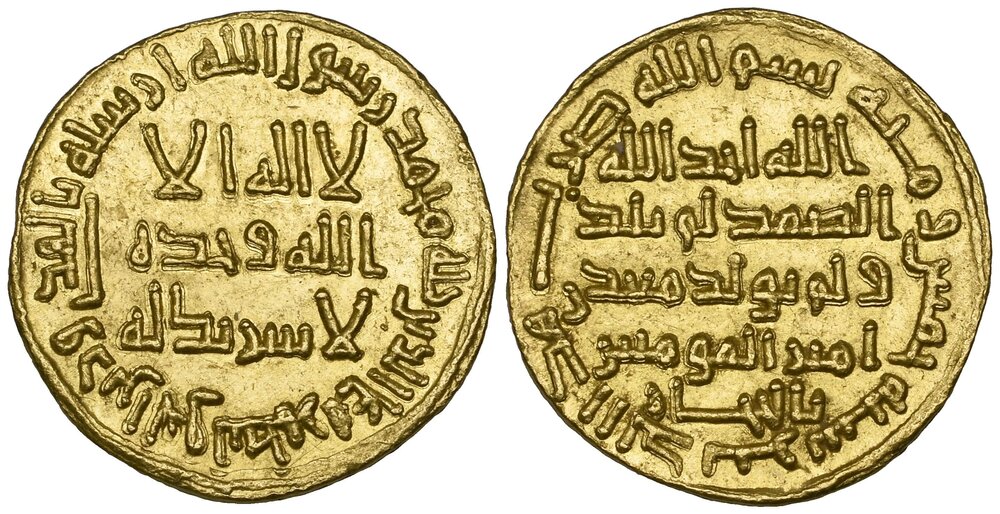Ancient currency: glimpses of early Islamic coins

TEHRAN - Being made in most ages of precious metal, or possessing a significant token value, coins have always been prized, often hoarded, and, therefore, frequently buried for safety.
In the Islamic currency system, the first coin that bore an Arabic inscription was called a dinar and was similar, in both size and weight, to the Byzantine solidus.
In the margin surrounding the design the testimony of Islam was written in Arabic: “In the name of God, there is no deity but God; He is One; Muhammad (PBUH) is the messenger of God.”
The Muslim conquest of Persia, also known as the Arab conquest of Iran, led to the fall of the Sasanian Empire in ca. 651 and the eventual decline of the Zoroastrian religion. The conquering Muslims at first mimicked the coinage of their predecessors. In the western provinces, they issued gold and copper pieces imitated from contemporary Byzantine coins, modifying the cross on the reverse of the latter somewhat to suit Muslim sensibilities. In the eastern provinces, the Arab governors issued silver dirhams that were copies of late Sasanian coins (mostly of those of Khosrow II; with the addition of short Arabic inscriptions on the margin and often the name of the Arab governor in Pahlavi; even the crude representation of the fire altar was retained.
Here are glimpses of early Islamic coins:
Umayyad coins (661-750 CE)
As part of a policy to unify the various regions under Islamic rule, Caliph Abd al-Malik ibn Marwan introduced the first Umayyad gold coins in 691 CE. Within a short period, Islamic Coins replaced all Sassanian and Byzantine coins in Muslim lands, according to Muslim Heritage.
Abbasid coins (750-1258 CE)
The Abbasid Dynasty experimented with different kinds of coins. They improved the appearance of coins using a more elegant form of Kufic script and the legends and the size of the legends on the dinars were changed so that they could include two margins.
Fatimid coins (909-1171 CE)
During the Fatimid Dynasty, Islamic coins were of such high quality and so abundant that they became the most widespread trade coins in the Mediterranean world.
Andalusian coins (711-1494 CE)
Muslims minted their first gold coins when they entered Spain in 711 CE. The new coins were modeled in size and design after the Arab-Byzantine but their inscriptions were in Latin. A large star in the center of the obverse field distinguished the Islamic Spanish coin from the Arab-Latin one.
AFM
Leave a Comment